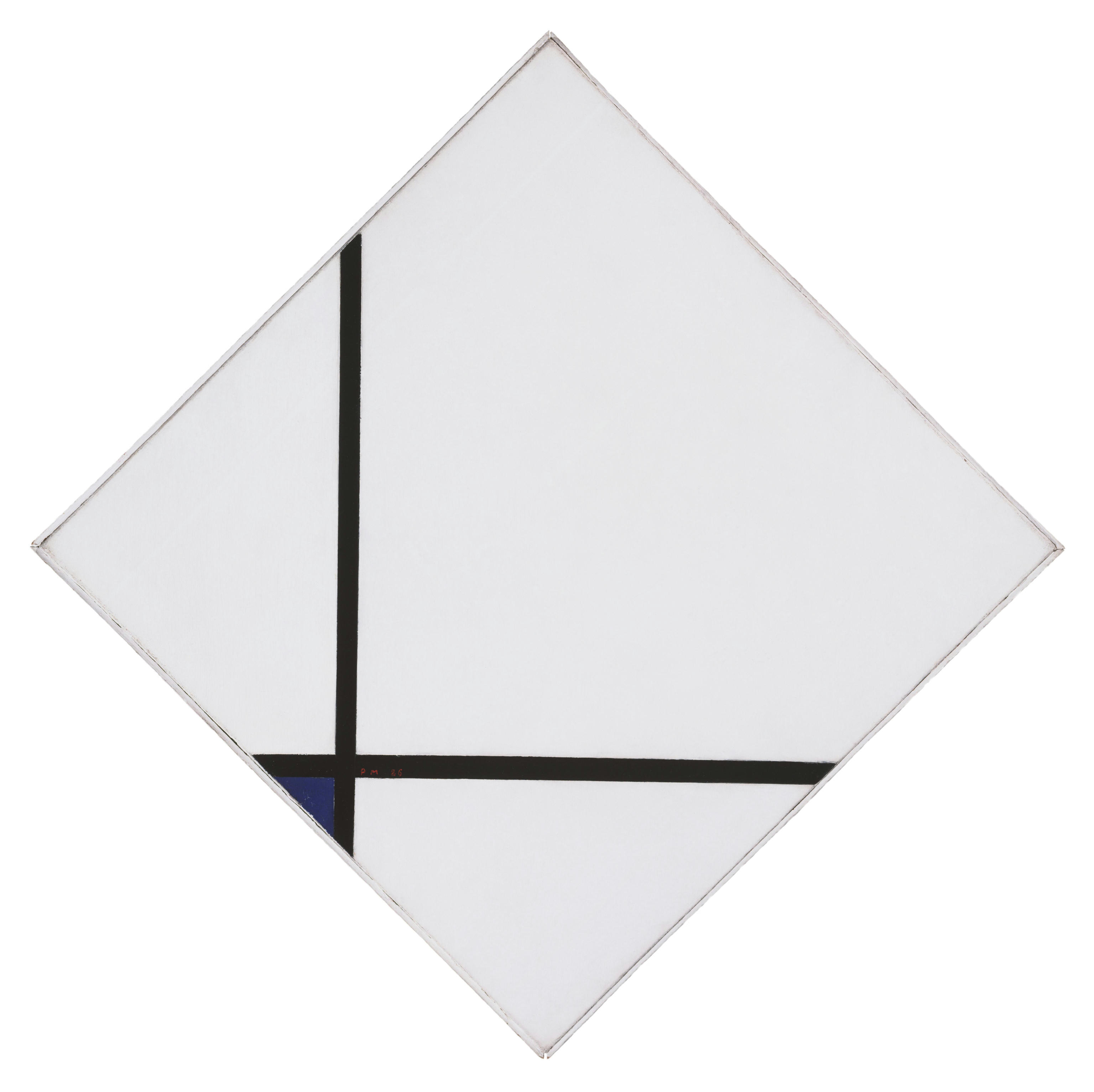
The heirs of Dutch artist Piet Mondrian claim that a nearly 100-year-old canvas by the De Stijl master currently in the collection of the Philadelphia Museum of Art (PMA) was stolen by the Nazis. Now, they’re suing to get the prized object back.
The painting, Composition With Blue (1926), is worth more than $100 million, according to court documents.
It has been on view almost continuously since 1952, when it was bequeathed to the museum by legendary the collector A.E. Gallatin, according to the Philadelphia Inquirer, which first reported news of the lawsuit. Gallatin had purchased the artwork 13 years prior from Buchholz Gallery in New York, one of the Nazis’ preferred outlets for disposing of looted art.
In a statement to Artnet News, the museum described the case as “meritless,” noting that both the artist and his lone heir were aware of the painting’s whereabouts after the war and never sought to reclaim it.
A lawyer representing the descendants of Mondrian’s heir, friend and fellow artist Harry Holtzman, filed a complaint in the Philadelphia County Court of Common Pleas, on Friday, December 10, demanding that the painting be returned.
“This great work by Mondrian was seized by the Nazis,” said one of the estate’s trustees, Madalena Holtzman, in a statement. “We are greatly disappointed that we have been compelled to take legal action to enforce our rights.”
A representative for the Philadelphia Museum of Art said the museum “fully supports restoring artwork looted by the Nazi regime to its rightful owners” and has “done so in the past.” (Earlier this year, the PMA restituted a Nazi-looted “pageant shield” to the Czech Republic.) This case, however, is different because “the private trust that is suing the museum has no legitimate claim” to the work, the PMA spokesperson said.
Gallatin, who donated the painting to the museum, was a friend of Mondrian’s; the PMA claims the artist was fully aware that the collector owned and displayed the painting. He even volunteered to help restore it at one point.
“We have no reason now to question Mondrian’s decisions or those of his good friend and immediate heir, Harry Holtzman, who for another 43 years after Mondrian’s death was fully aware that the Philadelphia Museum of Art owned and displayed the painting and never made a claim,” the spokesperson said.
Shortly after its completion in 1926, Composition With Blue was moved to a museum in Hanover, Germany. There, in 1937, it was seized by the Nazis as part of a larger effort to rid the country of modern art. The piece was included in the party’s notorious “Degenerate Art” exhibition that same year.
The artwork was later transferred to the possession of Karl Buchholz, a German dealer Hitler had appointed to sell confiscated art, who subsequently sent the canvas to his business partner Curt Valentin in New York. It was from Valentin that Gallatin purchased the piece in 1939.
Fearing the rise of fascism across Europe, Mondrian had fled Paris for London in 1938, and then London for New York in 1940. Holtzman, an abstract painter, sponsored Mondrian’s immigration into the United States, and the two became close friends. Upon his death in 1944, Mondrian left all his property to Holtzman.
A representative for the estate, which also filed suit last year against Germany’s Kunstmuseen Krefeld, did not immediately respond to an inquiry about why the heirs decided to reclaim the work now, 70 years after it first went on view in Philadelphia.